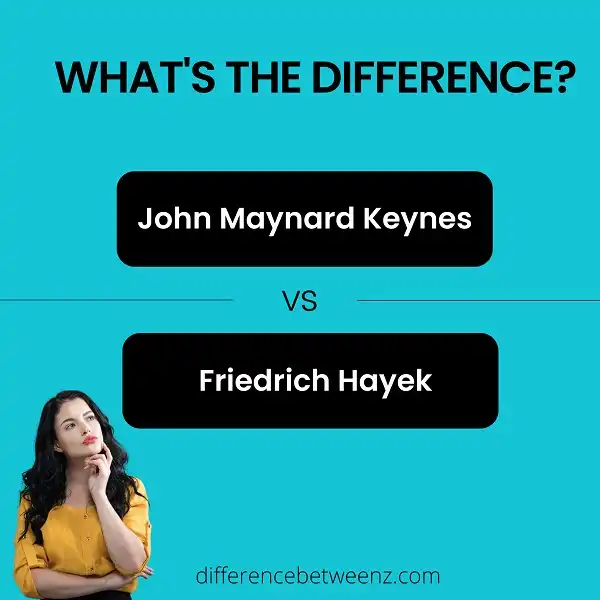The economic cycle of booms and busts has been around for centuries, but its understanding was revolutionized by two key economists whose ideas remain at the forefront of modern economic thought: John Maynard Keynes and Friedrich Hayek. Both were influential in developing theories about how to cope with Great Depression-era unemployment and poverty, yet their views on the cause—and cure—of the trade cycle differed drastically. In this blog post, we’ll explore the differences between Keynesian & Hayekian economic concepts related to the cause and remedy of cyclical unemployment. Alongside this analysis will be an exploration into more recent developments which have led to a symbiotic integration of both Keynesian policies as well as Hayekian economics—bringing us closer to a better comprehension of how best to stabilize our economy over time.
What are John Maynard Keynes’s Views?
- John Maynard Keynes had a very different view when it came to the causes and cures of the trade cycle. He looked beyond just simply supply and demand as other economists did. Instead, he argued that the uncertainty of investments during times of economic recession was one of the main problems.
- According to Keynes, investment was rooted in short-term confidence and trust in market demand, so if those two parameters faltered then people will become hesitant to invest in long-term projects or services. As a result, investments would stumble and create an economic contraction.
- To counteract this, Keynes proposed boosting consumer spending through wage increases or tax cuts as a means to get out of the recession faster. Hopefully, this would put cash flow back into the hands of average citizens so they can start investing again; creating a longer-lasting recovery for everyone involved.
What is Friedrich Hayek view?
Friedrich Hayek was an economist and philosopher who conducted extensive research on the causes and cures of trade cycles. He argued that market economies suffer from a lack of stability and instead experience ‘trade cycles’ of booms and busts. Of particular concern to him was the boom-bust-boom period, when the economy experiences a rapid cycle of over-investment growth, followed by an even more severe collapse.
Hayek’s proposed cure for these cycles included raising interest rates to control the money supply during times of expansion, reducing taxes and government spending to help bring down debt levels during recessions, and providing incentives for businesses to remain competitive by avoiding artificial favoritism from governments. While his views were largely influential then and now, his ideas have yet to be implemented in a full policy solution to the issue of trade cycles.
Difference between Causes Cure Of Trade Cycle Keynesian Hayekian Views
The difference between the causes and cures of the trade cycle is widely debated in both Keynesian and Hayekian economic models. The differing views, based on a variety of variables and data, suggest that while both approaches may agree on the diagnosis of underlying problems, they may disagree on how to address them.
- From a Keynesian perspective, the underlying cause of cyclical innovation is rooted in inadequate aggregate demand, while the laissez-faire advocacy from Hayek suggests market forces collude with government interventions to produce further difficulty.
- As far as cures go, Keynesians tend to favor stimulus packages as an active solution for immediate growth; whereas Hayekians prefer greater reliance on free markets and rule of law implementation that includes stabilizing prices as well as investment strategies.
- Ultimately, whichever approach is adopted will depend upon many factors including political objectives, cultural predispositions, and macroeconomic conditions at the time.
Conclusion
It is interesting to note the difference in how Keynesian and Hayekian economists view the causes and cures of trade cycles. While both schools of thought acknowledge that there are ups and downs in the economy, they tend to differ on what specifically causes these cycles. For Keynesians, it is government spending that ultimately drives economic growth and expansion. On the other hand, Hayekian economists believe that it is private sector investment that leads to increased economic activity. There are pros and cons to both theories, but ultimately it is up to each individual economist to decide which one they think makes more sense.


